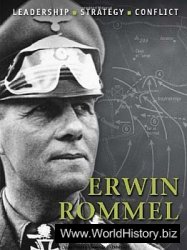World War II devastated the Soviet Union. Twenty million
citizens lost their lives, and cities such as Kiev, Kharkov,
and Leningrad suffered enormous physical destruction.
As the lands that had been occupied by the German
forces were liberated, the Soviet government turned its
attention to restoring their economic structures. Nevertheless,
in 1945, agricultural production was only 60 percent
and steel output only 50 percent of prewar levels.
The Soviet people faced incredibly difficult conditions:
they worked longer hours; they ate less; they were illhoused
and poorly clothed.
In the immediate postwar years, the Soviet Union removed
goods and materials from occupied Germany and
extorted valuable raw materials from its satellite states in
Eastern Europe. More important, however, to create a
new industrial base, Stalin returned to the method he had
used in the 1930s—the extraction of development capital
from Soviet labor. Working hard for little pay and
for precious few consumer goods, Soviet laborers were expected
to produce goods for export with little in return for
themselves. The incoming capital from abroad could then
be used to purchase machinery and Western technology.
The loss of millions of men in the war meant that much
of this tremendous workload fell to Soviet women, who
performed almost 40 percent of the heavy manual labor.
The pace of economic recovery in the Soviet Union
was impressive. By 1947, Russian industrial production
had attained 1939 levels; three years later, it had surpassed
those levels by 40 percent. New power plants,
canals, and giant factories were built, while new industrial
enterprises and oil fields were established in Siberia
and Soviet Central Asia. Stalin’s new five-year plan, announced
in 1946, reached its goals in less than five years.
Although Stalin’s economic recovery policy was successful
in promoting growth in heavy industry, primarily
for the benefit of the military, consumer goods remained
scarce. The development of thermonuclear weapons,
MIG fighters, and the first space satellite (Sputnik) in the
1950s may have elevated the Soviet state’s reputation as
a world power abroad, but domestically, the Soviet people
were shortchanged. Heavy industry grew at a rate three
times that of personal consumption. Moreover, the housing
shortage was acute, with living conditions especially
difficult in the overcrowded cities.
When World War II ended, Stalin had been in power
for more than fifteen years. During that time, he had removed
all opposition to his rule and remained the undisputed
master of the Soviet Union. Increasingly distrustful
of competitors, Stalin exercised sole authority and pitted
his subordinates against one another. One of these subordinates,
Lavrenti Beria, head of the secret police, controlled
a force of several hundred thousand agents, leaving
Stalin’s colleagues completely cowed. As Stalin
remarked mockingly on one occasion, “When I die, the
imperialists will strangle all of you like a litter of kittens.” 1
Stalin’s morbid suspicions added to the constantly increasing
repression of the regime. In 1946, government
decrees subordinated all forms of literary and scientific
expression to the political needs of the state. Along with
the anti-intellectual campaign came political terror. By
the late 1940s, there were an estimated nine million
people in Siberian concentration camps. Distrust of potential
threats to his power even spread to some of his
closest colleagues. In 1948, Andrei Zhdanov, his presumed
successor and head of the Leningrad party organization,
died under mysterious circumstances, presumably
at Stalin’s order. Within weeks, the Leningrad party organization
was purged of several top leaders, many of whom
were charged with traitorous connections with Western
intelligence agencies. In succeeding years, Stalin directed
his suspicion at other members of the inner circle, including
Foreign Minister Vyacheslav Molotov. Known as
“Old Stone Butt” in the West for his stubborn defense of
Soviet security interests, Molotov had been Stalin’s loyal
lieutenant since the early years of Stalin’s rise to power.
Now Stalin distrusted Molotov and had his Jewish wife
placed in a Siberian concentration camp.
Stalin died in 1953 and, after some bitter infighting
within the party leadership, was succeeded by Georgy
Malenkov, a veteran administrator and ambitious member
of the Politburo. Malenkov came to power with a
clear agenda. In foreign affairs, he hoped to promote an
easing of Cold War tensions and improve relations with
the Western powers. For Moscow’s Eastern European allies,
he advocated a “new course” in their mutual relations
and a decline in Stalinist methods of rule. Inside the
Soviet Union, he hoped to reduce defense expenditures
and assign a higher priority to improving the standard of
living. Such goals were laudable and probably had the
support of the majority of the Russian people, but they
were not necessarily appealing to key pressure groups
within the Soviet Union—the army, the Communist
Party, the managerial elite, and the security services (now
known as the Committee on Government Security, or
KGB). In 1953, Malenkov was removed from his position
as prime minister, and power shifted to his rival, the new
party general secretary, Nikita Khrushchev.
During his struggle for power with Malenkov, Khrushchev
had outmaneuvered him by calling for heightened
defense expenditures and a continuing emphasis on
heavy industry. Once in power, however, Khrushchev
showed the political dexterity displayed by many an
American politician and reversed his priorities. He now
resumed the efforts of his predecessor to reduce tensions
with the West and improve the standard of living of the
Russian people. He moved vigorously to improve the performance
of the Soviet economy and revitalize Soviet society.
By nature, Khrushchev was a man of enormous energy
as well as an innovator. In an attempt to release the
stranglehold of the central bureaucracy over the national
economy, he abolished dozens of government ministries
and split up the party and government apparatus. Khru-
shchev also attempted to rejuvenate the stagnant agricultural
sector, long the Achilles heel of the Soviet economy.
He attempted to spur production by increasing
profit incentives and opened “virgin lands” in Soviet
Kazakhstan to bring thousands of acres of new land under
cultivation.
Like any innovator, Khrushchev had to overcome the
inherently conservative instincts of the Soviet bureaucracy,
as well as of the mass of the Soviet population. His
plan to remove the “dead hand” of the state, however
laudable in intent, alienated much of the Soviet official
class, and his effort to split the party angered those who
saw it as the central force in the Soviet system. Khrushchev’s
agricultural schemes inspired similar opposition.
Although the Kazakhstan wheat lands would eventually
demonstrate their importance in the overall agricultural
picture, progress was slow, and his effort to persuade the
Russian people to eat more corn (an idea he had apparently
picked up during a visit to the United States) led
to the mocking nickname of “Cornman.” Disappointing
agricultural production, combined with high military
spending, hurt the Soviet economy. The industrial
growth rate, which had soared in the early 1950s, now declined
dramatically from 13 percent in 1953 to 7.5 percent
in 1964.
Khrushchev was probably best known for his policy of
destalinization. Khrushchev had risen in the party hierarchy
as a Stalin protégé, but he had been deeply disturbed
by his mentor’s excesses and, once in a position of authority,
moved to excise the Stalinist legacy from Soviet
society. The campaign began at the Twentieth National
Congress of the Communist Party in February 1956,
when Khrushchev gave a long speech criticizing some of
Stalin’s major shortcomings. The speech had apparently
not been intended for public distribution, but it was
quickly leaked to the Western press and created a sensation
throughout the world (see the box on p. 159). During
the next few years, Khrushchev encouraged more
freedom of expression for writers, artists, and composers,
arguing that “readers should be given the chance to make
their own judgments” regarding the acceptability of controversial
literature and that “police measures shouldn’t
be used.” 2 At Khrushchev’s order, thousands of prisoners
were released from concentration camps.
Khrushchev’s personality, however, did not endear
him to higher Soviet officials, who frowned at his tendency
to crack jokes and play the clown. Nor were the
higher members of the party bureaucracy pleased when
Khrushchev tried to curb their privileges. Foreign policy
failures further damaged Khrushchev’s reputation among
his colleagues. His plan to place missiles in Cuba was the
final straw (see Chapter 7). While he was away on vacation
in 1964, a special meeting of the Soviet Politburo
voted him out of office (because of “deteriorating health”)
and forced him into retirement. Although a group of
leaders succeeded him, real power came into the hands of
Leonid Brezhnev (1906 –1982), the “trusted” supporter of
Khrushchev who had engineered his downfall.




 World History
World History









